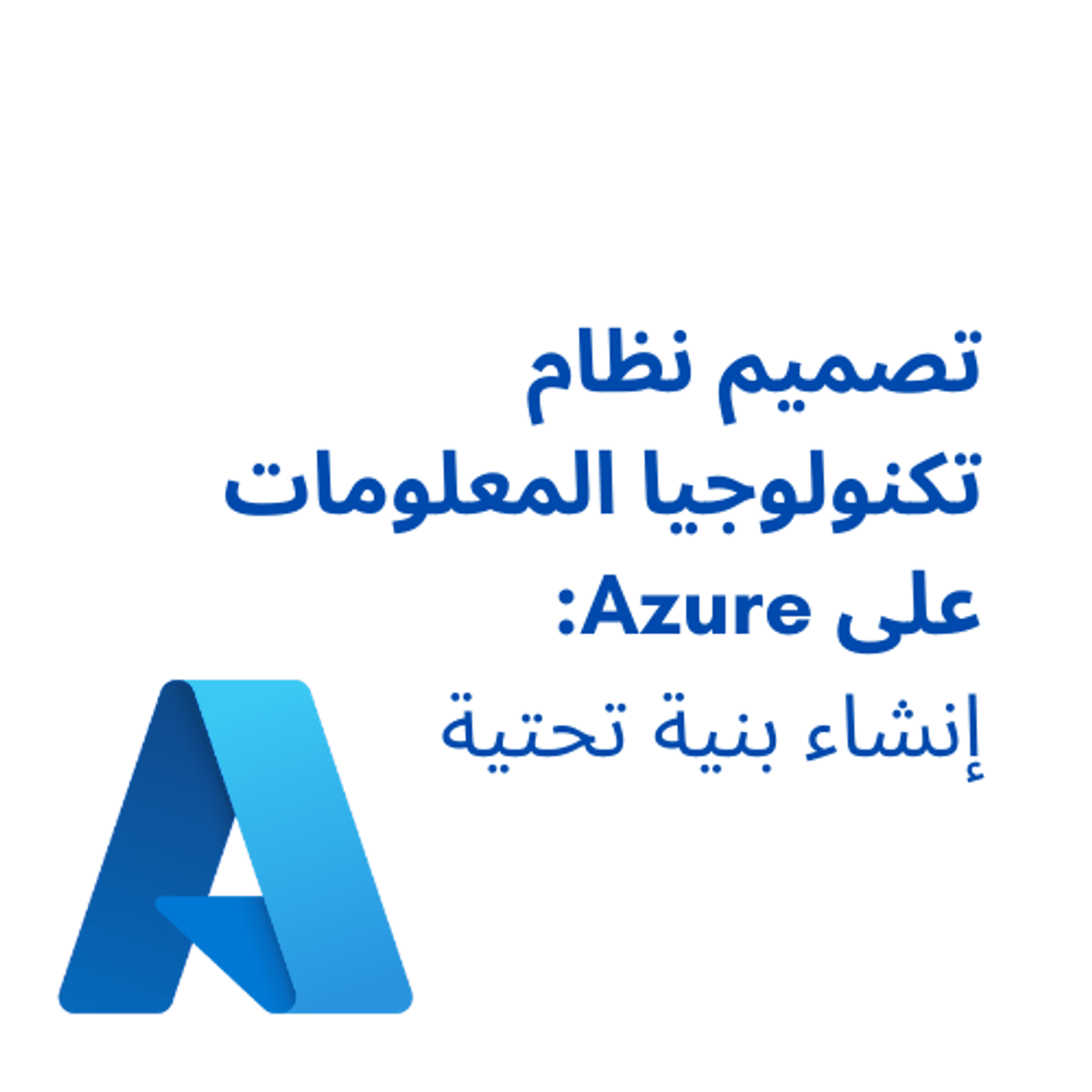
هذا المشروع الإرشادي تصميم نظام تكنولوجيا المعلومات على ازور: إنشاء بنية تحتية مخصص لـلأشخاص الذين لديهم معرفة متوسطة بتصميم البنية التحتية أو يعملون كمهندسين للبنية التحتية أو مديري النظم أو عمليات تكنولوجيا المعلومات. في هذه الدورة التدريبية والتي تستغرق ساعة واحدة ستتعرف على منصة ازور والموارد الأساسية و ستتعلم كيفية إنشاء كمبيوتر افتراضي كخادم وكيفية الوصول إليه ، إنشاء الشبكات الافتراضية وكيفية إنشاء الاتصال بينها. ولتحقيق ذلك، سنعمل من خلال بوابة الويب لأزور. هذا المشروع فريد من نوعه لأنه يقدمك للخدمات المقدمة من ازور حيث يمكنك استضافة التطبيقات والانظمة على السحابة.المشروع حيساعدك انك تتعلم خدمات البنية التحتية على الكلاود ومواكبة أحدث التكنولوجيات وده مهم لأن كل الشركات بتتجه لنقل انظمتها على الكلاود. لكي تنجح في هذا المشروع، ستحتاج إلى معرفه متوسطه بالبنيه التحتيه او مراكز البيانات و بعض الموارد مثل الخوادم او سيرفرات, الشبكات وكيفيه الاتصال بها و التخزين
What's inside
Syllabus
Good to know
Save this course
Activities
إنشاء بيئة افتراضية على أزور
Show steps
سيساعد إنشاء بيئة افتراضية على أزور الطلاب على فهم العملية الأساسية لإنشاء البنية التحتية لسحابة أزور.
Show steps
-
إنشاء حساب أزور
-
إنشاء مجموعة موارد
-
إنشاء شبكة افتراضية
-
إنشاء كمبيوتر افتراضي
Show all one activities
إنشاء بيئة افتراضية على أزور
Show steps
سيساعد إنشاء بيئة افتراضية على أزور الطلاب على فهم العملية الأساسية لإنشاء البنية التحتية لسحابة أزور.
Show steps
- إنشاء حساب أزور
- إنشاء مجموعة موارد
- إنشاء شبكة افتراضية
- إنشاء كمبيوتر افتراضي
Career center
Cloud Engineer
IT Architect
Systems Engineer
DevOps Engineer
Network Engineer
Data Engineer
Security Engineer
Software Engineer
Web Developer
Database Administrator
IT Manager
IT Consultant
IT Auditor
IT Project Manager
IT Specialist
Reading list
Share
Similar courses
OpenCourser helps millions of learners each year. People visit us to learn workspace skills, ace their exams, and nurture their curiosity.
Our extensive catalog contains over 50,000 courses and twice as many books. Browse by search, by topic, or even by career interests. We'll match you to the right resources quickly.
Find this site helpful? Tell a friend about us.
We're supported by our community of learners. When you purchase or subscribe to courses and programs or purchase books, we may earn a commission from our partners.
Your purchases help us maintain our catalog and keep our servers humming without ads.
Thank you for supporting OpenCourser.



